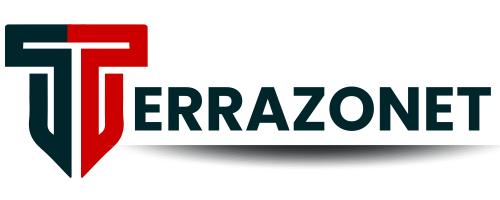Managing payroll for a traditional office-based workforce is already a detailed process, but when you add remote employees into the mix, it becomes even more complex. From handling different tax jurisdictions to ensuring timely payments across borders, businesses must adopt smart payroll practices to keep everything running smoothly. This guide walks you through the essentials of setting up payroll accounts for remote teams and offers practical steps to ensure compliance and efficiency.
Why Payroll Management Matters for Remote Teams
Remote work has become a global norm, with businesses hiring talent across states and even countries. While this allows companies to tap into a diverse pool of skills, it also introduces payroll challenges that can’t be overlooked.
Compliance with Local Regulations
Every region—whether it’s a state within a country or a completely different nation—has its own tax rules, labor laws, and compliance requirements. Employers must ensure they’re following the correct guidelines to avoid penalties.
Accurate and Timely Payments
Remote employees expect accurate and timely compensation just like in-office staff. Delays or mistakes in payments can harm trust, impact productivity, and damage a company’s reputation.
Record-Keeping and Transparency
Remote teams often rely on digital communication, so having a clear system for payroll records ensures transparency and makes resolving issues much easier.
Key Considerations Before Choosing a Payroll System
Before implementing a payroll solution for remote employees, businesses need to consider a few critical factors.
Nature of Remote Employment
- Are workers full-time employees or independent contractors?
- Do you have remote staff in multiple countries or just across states?
The answers determine tax obligations, payment methods, and benefits management.
Payment Frequency and Currency
Remote workers may prefer to be paid weekly, bi-weekly, or monthly. If employees are located abroad, currency conversion fees and fluctuating exchange rates should also be taken into account.
Integration with Other Tools
Payroll should not function in isolation. The right payroll system should integrate with accounting software, HR platforms, and time-tracking tools to streamline processes.
Steps to Set Up Payroll Accounts for Remote Teams
Establishing payroll for remote workers may seem daunting, but breaking it down into manageable steps makes it much easier.
Step 1: Classify Workers Correctly
Misclassification of workers is one of the most common payroll mistakes. Determine whether each remote worker is an employee or a contractor. Employees usually require tax withholding, while contractors handle their own taxes.
Step 2: Understand Tax Laws and Compliance Rules
If your team is spread across multiple regions, research each location’s labor laws. For example, in the U.S., employers need to be aware of both federal and state regulations. Internationally, you may need to consult with local payroll experts.
Step 3: Choose the Right Payroll Software
To efficiently set up payroll account for remote teams, select software that supports multi-state or international compliance, automates tax calculations, and provides secure digital access for employees. Popular payroll platforms also handle benefits administration and direct deposits.
Step 4: Collect Employee Information
Ensure you have all the necessary details, including:
- Tax identification numbers
- Direct deposit information
- Employment agreements
- Benefits enrollment data
Maintaining accurate records prevents errors and ensures compliance.
Step 5: Automate Payment Processing
Automation reduces manual work and minimizes the risk of late or inaccurate payments. Most payroll platforms allow scheduling, direct deposits, and automatic tax filings, saving businesses significant time.
Best Practices for Managing Remote Payroll
Once the payroll system is in place, businesses should adopt best practices to maintain accuracy and efficiency over time.
Keep Policies Transparent
Clear payroll policies around payment dates, deductions, and benefits ensure that remote workers know exactly what to expect.
Regularly Audit Payroll Processes
Conduct routine audits to catch mistakes early. This helps maintain compliance and builds employee trust.
Provide Employee Self-Service Portals
Self-service portals allow employees to view their pay stubs, update personal details, and access tax forms without relying on HR for every request.
Stay Updated on Changing Laws
Employment laws evolve frequently, especially with the rise of global remote work. Regularly reviewing legal updates keeps your payroll system compliant.
Challenges and How to Overcome Them
Despite advanced tools, managing payroll for remote teams comes with unique challenges.
Cross-Border Payments
Paying international employees can be tricky due to exchange rates and banking regulations. To resolve this, businesses can use payroll providers that specialize in global payments.
Compliance Risks
Remote work across different jurisdictions increases the risk of compliance errors. Partnering with a payroll service or legal expert ensures adherence to local laws.
Data Security
With sensitive financial information being exchanged online, payroll systems must have strong encryption and security protocols. Multi-factor authentication and secure portals reduce risks.
The Future of Payroll for Remote Teams
The payroll landscape is evolving alongside remote work. AI-powered platforms are making processes smarter, while blockchain-based payment systems promise even more transparency and efficiency in the future. Businesses that embrace modern payroll tools and strategies will find it easier to scale remote teams without payroll bottlenecks.
Conclusion
Setting up payroll accounts for remote teams doesn’t have to be overwhelming. By classifying workers correctly, understanding tax laws, using the right payroll software, and implementing best practices, businesses can ensure smooth operations. Payroll isn’t just about paying employees—it’s about compliance, trust, and sustaining long-term growth in a remote-first world.
YOU MAY ALSO LIKE: How Small Businesses Can Make Informed Payroll and HR Software Decisions



















